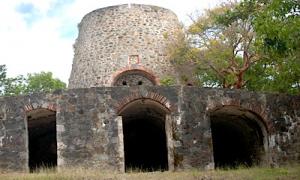To explore modern-day history of the park, it's worth turning the calendar back to the 1950s when a Rockefeller -- not John D. Rockefeller Jr., but rather Laurence Spelman Rockefeller -- took a decided liking to the island of St. John.
Not only did he help launch the Caneel Bay Resort, which remains to this day just east of Cruz Bay, but his efforts also provided much of the land that made Virgin Islands National Park a reality. Both the park and the resort opened on the same day in 1956.
More than half of the land on St. John lies within the park boundaries. The rest is small towns, shops, homes and private lands. In 1962, the park was enlarged to include 5,650 acres of submerged lands off the island. The Virgin Islands Coral Reef National Monument was proclaimed in 2001 that includes 12,708 acres of federally owned submerged lands off the island.
An interesting historical footnote is that Laurence and his wife, Mary, donated their Vermont home that today is the park system unit known as the Marsh-Billings-Rockefeller National Historic Park.
Nestled among the rolling hills and pastures of eastern-central Vermont, the historical park is the only unit of the National Park System to tell the story of conservation history and the evolving nature of land stewardship in America. The boyhood home of George Perkins Marsh, one of America's first conservationists, and later the home of Frederick Billings, the property was given to the American people by Laurance S. and Mary F. Rockefeller. The park was created by an Act of Congress and signed into law by President George Bush on August 26, 1992.
Digging deeper into the history of St. John, you can travel all the way back to roughly 1000 BC, when hunter-gathers stopped at the island long enough to create middens than revealed their presence to today's archaeologists.
The first villages are thought to have appeared on the island by 200 BC, and by 1200 AD the Taino culture (see archaeology section) made their presence known via petroglyphs.
 By the mid-1600s the island's history took on a darker tone, as Europeans arrived and enslaved islanders to toil in sugar cane plantations and rum distilleries.
By the mid-1600s the island's history took on a darker tone, as Europeans arrived and enslaved islanders to toil in sugar cane plantations and rum distilleries.
By 1733, there were 109 cane and cotton plantations covering the island. As the plantation economy grew, so did the demand for slaves, who were essential to sugar production. Under the auspices of the Danish West India Company, St. Thomas became the center of the slave trade with Africa. But the slaves soon revolted, killing all the whites on the island in 1733. French troops from Martinique, not Danish troops, subdued the slaves.
Sugar production continued for more than a century, effectively ending with the emancipation of the slaves in 1848.





